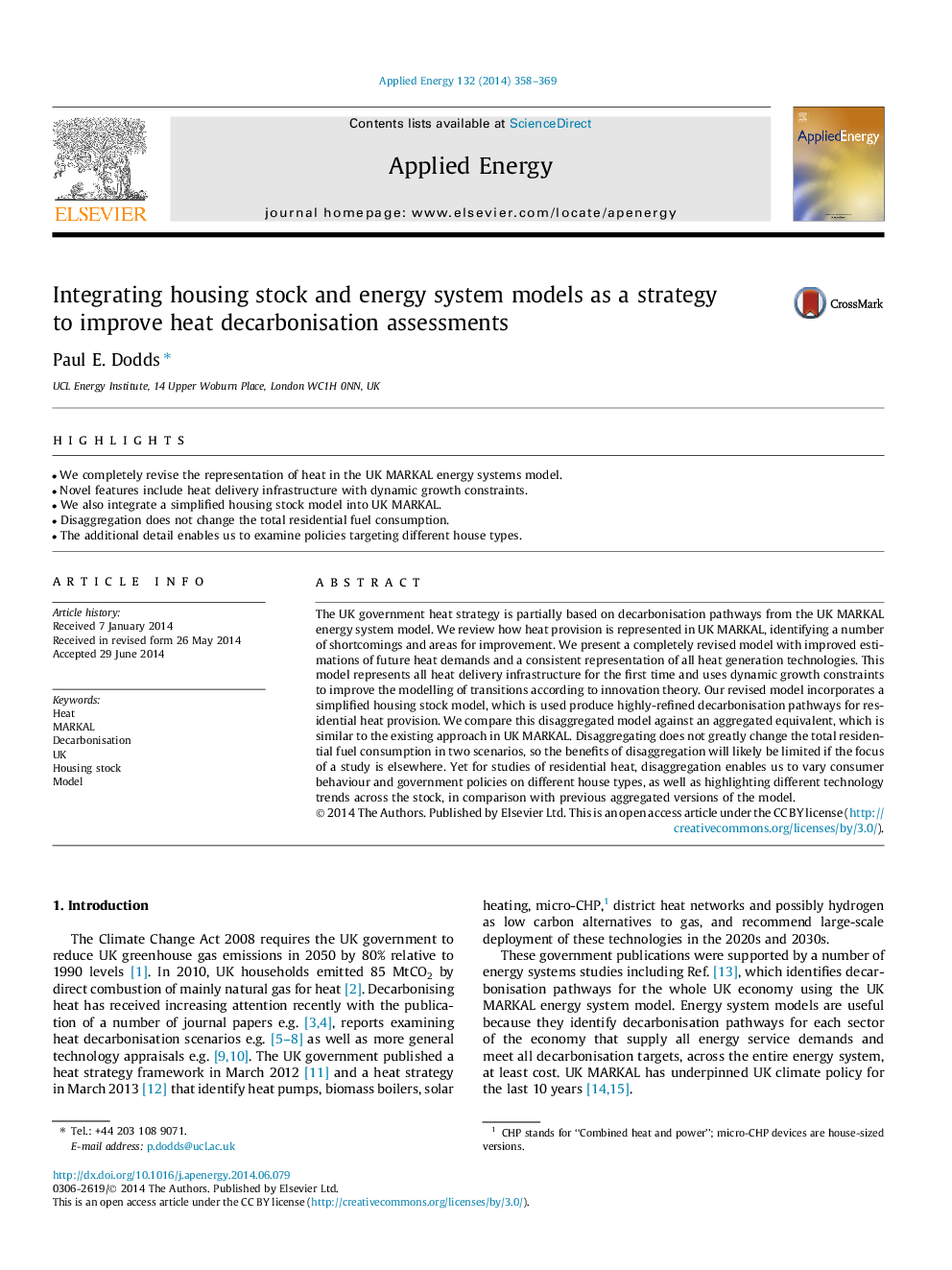| Article ID | Journal | Published Year | Pages | File Type |
|---|---|---|---|---|
| 6689842 | Applied Energy | 2014 | 12 Pages |
Abstract
The UK government heat strategy is partially based on decarbonisation pathways from the UK MARKAL energy system model. We review how heat provision is represented in UK MARKAL, identifying a number of shortcomings and areas for improvement. We present a completely revised model with improved estimations of future heat demands and a consistent representation of all heat generation technologies. This model represents all heat delivery infrastructure for the first time and uses dynamic growth constraints to improve the modelling of transitions according to innovation theory. Our revised model incorporates a simplified housing stock model, which is used produce highly-refined decarbonisation pathways for residential heat provision. We compare this disaggregated model against an aggregated equivalent, which is similar to the existing approach in UK MARKAL. Disaggregating does not greatly change the total residential fuel consumption in two scenarios, so the benefits of disaggregation will likely be limited if the focus of a study is elsewhere. Yet for studies of residential heat, disaggregation enables us to vary consumer behaviour and government policies on different house types, as well as highlighting different technology trends across the stock, in comparison with previous aggregated versions of the model.
Related Topics
Physical Sciences and Engineering
Energy
Energy Engineering and Power Technology
Authors
Paul E. Dodds,
